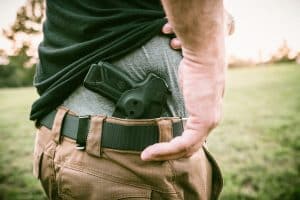
The Habit of Preparedness: Why Regular Training is Key to Responsible Concealed Carry
Published: 11/5/2024

Imagine being caught in a life-or-death situation. Unprepared. Unsure. Frozen. Your heart races as you realize the unthinkable is happening. In this moment, your safety—and that of your loved ones—hangs by a thread. What if I told you that regular training could be as crucial to your survival as your next breath? Because when chaos erupts, only the truly prepared will rise to protect what matters most. It’s not just about owning a firearm. It’s about the unwavering confidence that only comes from dedicated, thoughtful training.
This isn’t just an article—it’s a wake-up call.

Are you ready to transform from a potential victim into a prepared defender? Read on, and discover how to turn uncertainty into unshakeable readiness.
Your life may depend on it.
Understanding the Importance of Regular Training

Training with your concealed carry weapon should be as routine as checking your email or locking your doors at night. Why? Because it ingrains critical skills and habits that could one day save lives. Regular practice builds muscle memory, enabling you to react swiftly and accurately without fumbling or second-guessing. Each pull of the trigger, each drawn from the holster, reinforces these life-saving reflexes.
Building Confidence
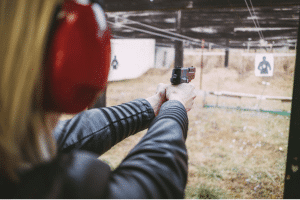
Confidence comes with familiarity. The more you handle your firearm, the more natural it feels. This isn’t about the bravado you see in old westerns; it’s about calm assurance in high-stakes situations. Knowing you can reliably and safely operate your weapon makes all the difference when you truly need to. Your weapon becomes an extension of yourself, something you can rely on because you know how to use it. This confidence isn’t about being fearless; it’s about being prepared. When you know what to do, fear takes a backseat, and confidence takes the wheel.
Muscle Memory
Muscle memory is a fancy term for something simple: when you do something over and over again, your body starts to remember how to do it without you having to think about it. This is crucial when it comes to handling a firearm. In a high-pressure situation, you don’t have time to think through each step. Your body needs to know what to do automatically, and that’s where muscle memory comes in.
Through repeated practice, your body learns the exact motions needed to draw, aim, and fire your weapon accurately. These actions become almost second nature, allowing you to react quickly and efficiently. Regular training ensures that when the time comes, your body responds the way it should—swiftly and without hesitation.
Muscle memory also helps in reducing mistakes. In a stressful situation, it’s easy to fumble or make errors if you’re not well-practiced. But if you’ve trained regularly, your body will know exactly what to do, even if your mind is racing. This can be the difference between a successful defense and a dangerous mistake.
Improved Accuracy and Control
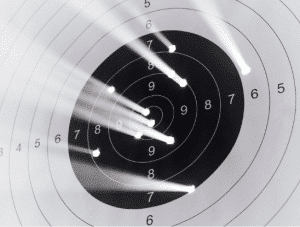

Accuracy is another cornerstone of responsible gun ownership. Regular visits to the range help fine-tune your aim, ensuring every shot counts. Similarly, quick reaction times are honed through consistent practice. In situations where every second matters, being able to quickly draw and accurately fire your weapon is paramount.
Through consistent practice, you learn how to control your breathing, manage recoil, and steady your aim. These skills are crucial in high-pressure situations where every second counts. The more you practice, the more control you gain over your weapon, and the more accurate you become.
Safety
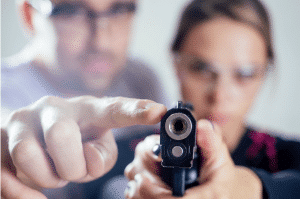
Safety is the first rule of being a gun owner. To stay safe, you need to train regularly. Training teaches you how to handle your gun the right way. Simple habits, like keeping the gun pointed in a safe direction, matter. You must also keep your finger off the trigger until you’re ready to shoot. These actions might seem small, but they make a big difference. Over time, these habits become automatic. You won’t have to think about safety—it will come naturally.
Going to the range often helps you spot and fix any bad habits. Even if you’ve been shooting for years, you can always improve. Sometimes, we slip into habits without noticing. A small mistake might not seem like a big deal, but it can lead to serious problems. At the range, you can catch these mistakes before they turn into something bigger. Staying sharp means you are always ready. It keeps you safe. It keeps the people around you safe too. Training isn’t just about shooting better—it’s about staying safe in every situation.
The more you train, the more confident you become. Confidence comes from knowing you can handle your gun properly. When things get tough, that confidence helps you stay calm. In a tense moment, staying calm is everything. It gives you control over the situation. Being calm can stop a bad situation from getting worse. Training builds that calm, steady mindset. It’s not just about protecting yourself. It’s about making sure everyone around you stays safe too. Whether you’re at home, at the range, or out in public, being trained and prepared makes all the difference.
Training as a Habit
The Range and at Home
The gun range is a vital venue for serious training. It’s where you can practice drawing your firearm from its holster swiftly yet safely. Here, you can also work on your shooting stance, ensuring stability and balance for better accuracy. Engaging targets at various distances helps simulate different defense scenarios while practicing with moving targets can mimic real-life threats.
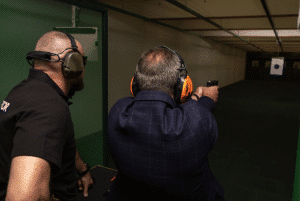
Home training complements your range sessions by allowing you to focus on aspects like dry fire drills, where you practice your grip, stance, and trigger control without live ammunition. Drawing from concealment in the clothes you wear daily helps ensure you’re as prepared on the street as you are at the range. High-tech tools like laser training systems can provide feedback on your aim, while simple target drills set up around your home reinforce quick aiming and shooting reflexes.
Navigating your home tactically, as if responding to an intruder, builds spatial awareness and helps you learn how to move effectively and safely in your environment.
Creating a Balanced Training Regimen
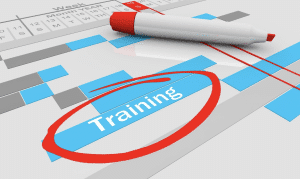
Balancing home and range training involves commitment. Setting a regular schedule—range visits maybe every other weekend and home drills twice a week—ensures consistent improvement. Whether it’s a quick dry-fire drill at home or a full session at the range, make sure you’re dedicating time to improving your skills. Over time, this regular practice will become a natural part of your routine, and you’ll find that it’s easier to stay consistent. Keep track of your progress; celebrate improvements and address areas that need work. Set goals for quicker draw times, better accuracy, and smoother tactical movements. Strive to beat your best and prepare for every possibility.
Consistency is Key
As responsible gun owners, our training is a testament to our dedication, not just to personal safety but to the well-being of our community. Regular consistent training isn’t just a part of gun ownership; it’s a fundamental aspect of how we live our lives responsibly. We prepare not because we expect the worst, but because we are committed to ensuring the best possible outcomes in bad situations.
Now is the time to start if you haven’t already committed to a consistent training schedule. Your ability to protect yourself and those around you depends on it. Let’s honor our rights and our responsibilities by being prepared at all times.
Regular training empowers us, equipping us with the skills and readiness that define responsible gun ownership. It’s about more than just marksmanship; it’s about cultivating a mindset of preparedness that resonates through every aspect of our lives. Consistency isn’t just about going to the range every once in a while—it’s about making training a regular part of your routine. This consistency is what turns training from a chore into a habit, and it’s what ensures that you’re always ready.
Integrating Training into Everyday Life
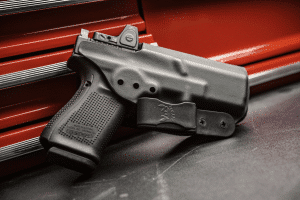
Integrating training into your daily routine doesn’t have to be a daunting task. It can be as simple as dedicating a few minutes each day to dry fire practice or incorporating weekend trips to the range as part of your family time. Making training a regular part of your life helps normalize the presence and purpose of your firearm, ensuring it feels like a natural extension of your responsibility.
Home training, especially, offers the flexibility to work on specific skills in the comfort and privacy of your own space. Techniques like drawing from concealment can be practiced alongside everyday activities, allowing you to refine your skills without disrupting your day. Advanced tools like laser trainers make these sessions both effective and engaging, providing real-time feedback that helps you adjust and improve.
Another way to integrate training is by participating in shooting sports or self-defense classes. These activities not only improve your skills but also make training more enjoyable. By combining training with hobbies you enjoy, you’re more likely to stay consistent and committed.
The Community Aspect of Regular Training

Beyond personal benefit, regular training contributes to community safety. A well-trained concealed carrier is a vigilant and prepared citizen, ready to act responsibly if the situation demands. This level of preparedness benefits not just the individual but the entire community, as it promotes a culture of safety and responsibility.
Community safety is greatly enhanced when individuals take the initiative to train regularly. By preparing ourselves, we’re setting an example of what it means to take our rights seriously. It’s about more than individual safety—it’s about fostering a community that values preparedness and respects the responsibilities that come with gun ownership.
The Broader Impact of Training

Training regularly is also a way to demonstrate the seriousness with which we approach our rights under the Constitution. It’s a statement that we value these rights deeply and are committed to exercising them responsibly. In a time when the rights of gun owners are often debated, showing that we are dedicated to safety and proficiency can help safeguard these freedoms for future generations.
Moreover, consistent training reinforces the principle that with great power comes great responsibility. As concealed carriers, we have the power to make life-or-death decisions; therefore, we must be prepared mentally, physically, and ethically to make those decisions wisely.

The Role of Professional Training
While self-practice is important, there’s no substitute for professional training. Working with a qualified instructor provides you with the expert guidance you need to refine your skills and correct any mistakes you might not notice on your own. Professional training also introduces you to advanced techniques and scenarios that you might not encounter in your regular practice.
Consider taking courses in defensive shooting, tactical training, or legal aspects of self-defense. These courses not only improve your skills but also deepen your understanding of the responsibilities that come with carrying a concealed weapon. They provide you with the knowledge and experience you need to handle high-pressure situations with confidence and control.
Professional training is also a great way to stay motivated and challenged. It pushes you to improve and gives you new goals to work toward, ensuring that your training never becomes stagnant. By investing in professional training, you’re investing in your safety and the safety of those around you.
Conclusion

The habit of being prepared is at the core of responsible concealed carry. By committing to regular training, we ensure that we are ready to act efficiently and safely, maintaining the peace of mind that comes with knowing we can effectively protect ourselves and our loved ones.
As we reflect on the importance of regular training, let us also consider its broader implications. It’s not just about being ready for a threat; it’s about embracing a lifestyle that values vigilance, responsibility, and community. Let’s honor our rights and our duties by being the best-prepared citizens we can be. Let this commitment to preparedness be our legacy—a testament to the seriousness with which we approach our role as defenders of ourselves and our communities.
Today, as you consider your training routine, remember that each session is not just practice; it’s preparation for life. Start now, and train regularly—your future self, and possibly someone else’s will thank you for it.
Our commitment
At Clinger Holsters, we’re here to support your training journey. Our holsters are designed to complement your practice, providing the comfort, reliability, and discretion you need to train effectively. Explore our range of holsters today and find the perfect fit for your concealed carry needs.
Remember to subscribe to our newsletter for more tips, training resources, and product updates. Stay informed, stay prepared, and stay safe. Check out our holsters to see which one is the best for you.

